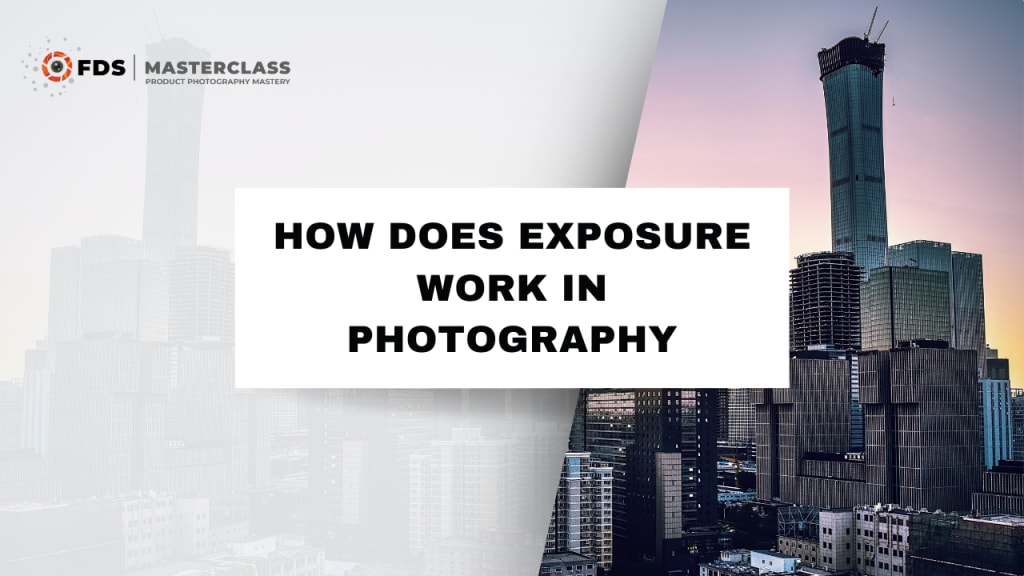How Does Exposure Work In Photography
The Exposure Triangle?

Imagine you're a painter, but instead of brushes and pigments, you have a camera and light as your tools. The magic happens when you control the amount of light that "paints" your image – that's the essence of exposure in photography. It's the foundation for capturing stunning visuals and breathing life into your creative vision.
But how does this light-painting work? Let's delve into the world of exposure:
The Exposure Triangle:
Think of exposure as a three-legged stool: aperture, shutter speed, and ISO. Each leg plays a crucial role in determining how much light reaches your camera's sensor, ultimately affecting the brightness and overall look of your photo.
Aperture: Imagine the aperture as the opening of the lens, like the iris of your eye. A wider aperture (smaller f-number) lets in more light, creating shallow depth of field (blurring the background) and a brighter image. Conversely, a narrower aperture (larger f-number) lets in less light, increasing depth of field (keeping everything sharp) and resulting in a darker image.
Shutter Speed: This is how long the curtain behind your lens stays open, exposing the sensor to light. A faster shutter speed (fraction of a second) captures fleeting moments and freezes motion, but lets in less light. A slower shutter speed (seconds or even minutes) allows more light in, ideal for low-light situations but blurs movement.
ISO: Think of ISO as the sensor's sensitivity to light. Higher ISO amplifies the signal, making your image brighter in low-light but introducing unwanted grainy noise. Lower ISO keeps the image clean but requires more light.
Watch Also:- For better visual learning, you can check our premium video here: How Camera Works
Balancing the Act:
The beauty of exposure lies in finding the perfect balance between these three settings. It's a constant dance, adapting to different lighting conditions and creative goals. For example, a portrait in bright sunlight might call for a wide aperture for shallow depth of field, a fast shutter speed to capture expressions, and a low ISO for clean details. Conversely, photographing waterfalls at night might require a narrow aperture for sharpness, a slow shutter speed for silky water effects, and a higher ISO to compensate for the darkness.
Mastering the Art:
Experimenting with these settings is key to mastering exposure. Start by understanding the basics of each setting and how they interact. Practice in different lighting scenarios, observing how changes affect your images. Remember, there's no single "correct" exposure; it's about achieving the look and feel you envision for your photograph.
Beyond the Basics:
As you progress, explore advanced techniques like bracketing (taking multiple photos with different exposure settings) and HDR (combining multiple exposures for wider dynamic range). Remember, exposure is a journey, not a destination. Embrace the learning process, experiment, and unleash your creative potential with the power of light!
Note:- Wanna know more about What is exposure, So read here complete blog: What Is Exposure? How You Can Use Them For Better Pictures?
Bonus Tip: Many cameras offer an "auto-exposure" mode, but for true control and creative freedom, manual mode is your friend. Don't be afraid to experiment and find your perfect exposure!
So, grab your camera, step into the light, and start painting your photographic masterpieces!
Conclusion:
Photography is a dance with light, and exposure is the music that guides your steps. It's a language that transcends technical jargon, becoming a tool for expression and storytelling. As you delve deeper into this world, remember:
Remember, the most beautiful photographs are often the ones that capture not just a scene, but a feeling. So, grab your camera, step into the light, and start painting your own photographic masterpieces. The world is your canvas, and exposure is your brush – go forth and create!
Bonus: Share your photography journey with the world! Connect with other enthusiasts, showcase your work, and inspire others to explore the magic of exposure. After all, the beauty of photography lies not just in capturing the world, but in sharing your unique perspective with it.
About the Creator
FDS Masterclass
Welcome to FDS Masterclass – your gateway to the world of visual storytelling! 🌟 We're here to share the secrets of premium product photography, video production, and entrepreneurial skills.






Comments
There are no comments for this story
Be the first to respond and start the conversation.